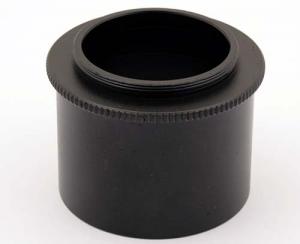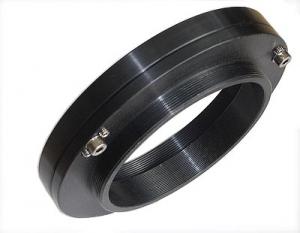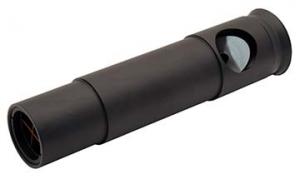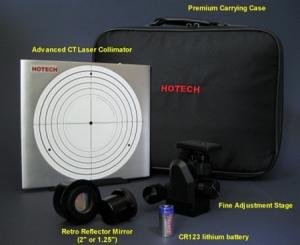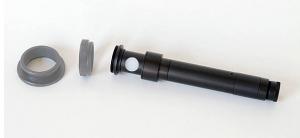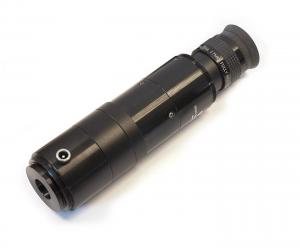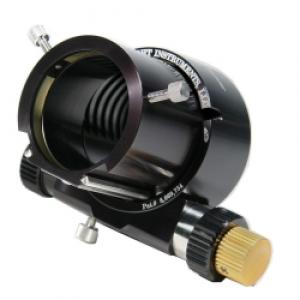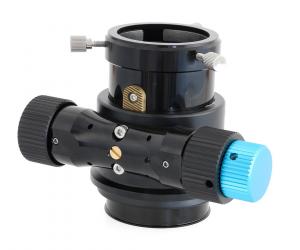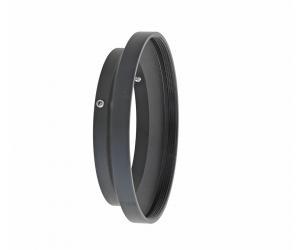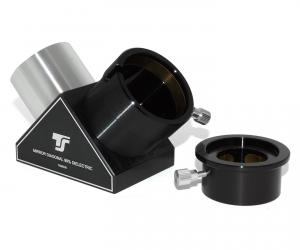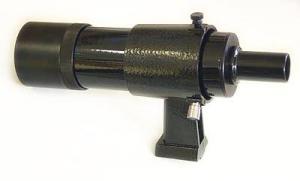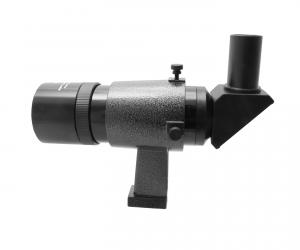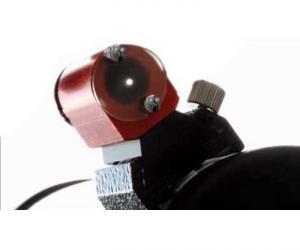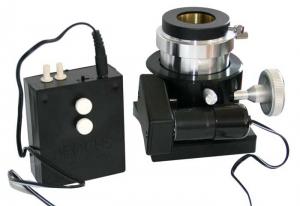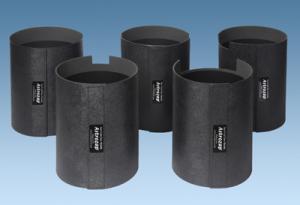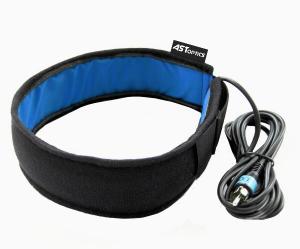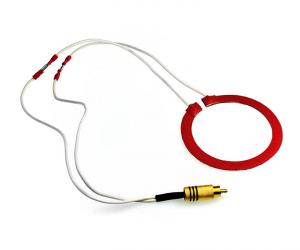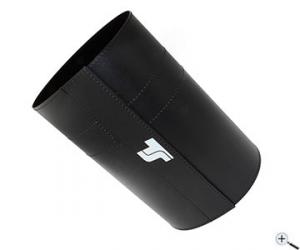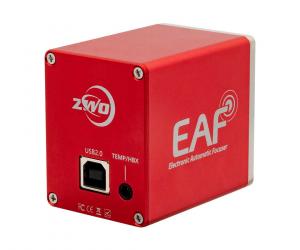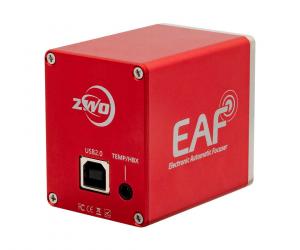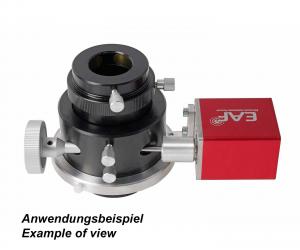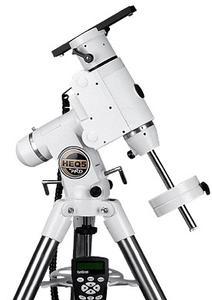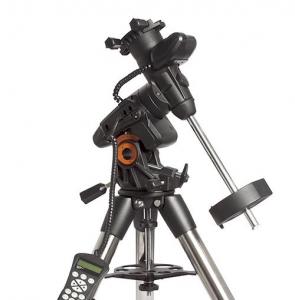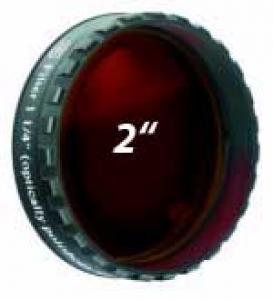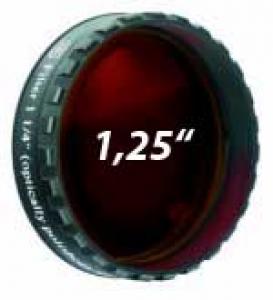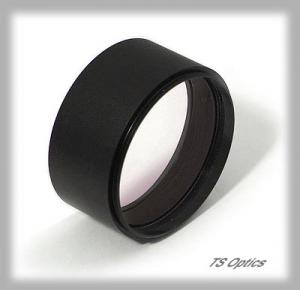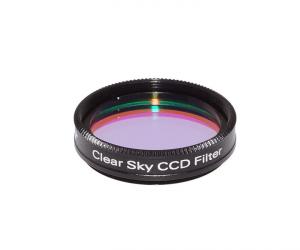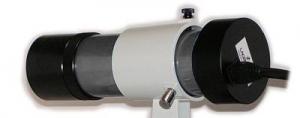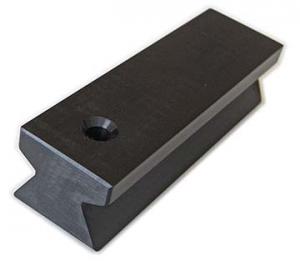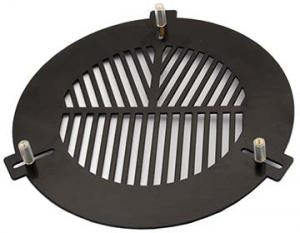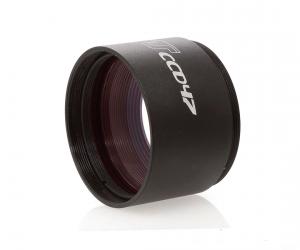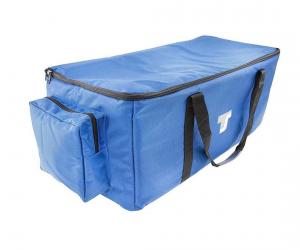- Telescopes
- Overview:
Telescopes - Achromatic Refractor
- Apochromatic Refractor
- Overview:
Apochromatic Refractor - ED Refractor - less color aberration than an achromatic
- SD APO - color free 2-element APO objective
- EDT APO - 3 element ED objective
- High End APO with 3-element APO objective - no color aberation
- Flatfield APO with flat field for Astrophotography
- All Apos and EDs from all manufacturers - large overview
- TS APO and ED from Japan with high quality optics
- Overview:
- Newtonian Telescopes
- Dobsonian Telescopes
- RC Ritchey Chretien Telescopes
- Casssegrain Telescopes
- Reflektor Telescopce with Lens Correcture
- Maksutov Cassegrain Telescopes
- GoTo Telescopes
- Solar Telescopes H-Alpha
- Overview:
- Mounts Tripods Rings Rails Power Supply ...
- Overview:
Mounts Tripods Rings Rails Power Supply ... - Mounts Equatorial with GoTo
- Mounts Equatorial without GoTo
- Mounts Azimutal with GoTo
- Mounts Azimutal without GoTo
- Mounts GoTo - Harmonic Drive
- Travel mounts for astro imaging
- Tripods Piers Polar Wedges
- Mount Control & Electronics
- Dovetail Clamps, Plates and Mount Adapters
- Tube Rings
- Power Supply
- Counterweights Balance Weights
- Mount Accessories - Other
- Overview:
- Telescope Accessories
- Overview:
Telescope Accessories - Eyepieces
- Barlows & Reducer Lenses
- Diagonal Mirrors and Prisms
- Binocular Viewers
- Finder Scopes
- Telescope Collimation and Test
- Cleaning Tools
- Transport and Storage
- Dust protection for Telescopes & Accessories
- Stray Light Protection
- Dewcaps and Heater
- Focusers, Adapters, Motorfocus
- Telescope DIY & Improvement
- Other telescope accessories
- Replacement Parts
- Overview:
- Filters
- Overview:
Filters - Color Filters and Color Filtersets
- Nebular Filters for Visual Observing
- Neutral-Density and Polfilter
- Photo Narrowband Nebular Filters
- Photo Broadband Filters
- Photo Planetary Filters
- Photo R-G-B and IR Cut Filters
- Photo - Filtersets
- Photometric Filters
- Clip Filter for DSLR Cameras
- Filter Wheels and Filterslider
- Solar Filters for white light
- Solarfilter for H-Alpha and Calcium
- Overview:
- Adaptors
- Overview:
Adaptors - Adapter 1,25" and 24,5mm
- Adapter 2"
- Adapter T2 - M42x0.75
- Adapter M48x0,75
- Adapter M54
- Adapter SC
- Adapter M63
- Adapter M68
- Adapter to other Threads
- Adapter Extensions
- Adapter camera bayonet
- Adapter Objective Filterthread
- Adapter Quick Changing , Rotation
- Adapter Eyepiece Projection
- Adapters Tilting
- Overview:
- Astrophotography and Photography
- Overview:
Astrophotography and Photography - Cooled Cameras
- Cameras without Cooling
- Deep-Sky Cameras uncooled
- Set-Offers Camera, Filter, Wheels
- Acessories for Cameras
- Travel mounts for astro imaging
- Imaging Correctors for Telescopes
- Autoguiding Cameras & Sets
- Everything for Guiding
- Focusing aids - Bahtinov mascs
- Flat Field foils and boxes
- Lenses for Cameras
- Piggyback Camera Holder
- Camera Bags, Photocases & more
- Digital Camera and Smartphone Adapter
- Other photo accessories
- Overview:
- Binoculars, Spotting Scopes, Microscopes, Range Finders
- Overview:
Binoculars, Spotting Scopes, Microscopes, Range Finders - Roof Prism Binoculars
- Binoculars with Porro prisms
- Binoculars from 100mm Aperture
- Binoculars with 1,25 inch eyepieces
- TSMX APO Binoculars
- Binoculars for Astronomy
- Binoculars Hiking Bird watching
- Monoculars - Opera Binoculars
- Accessories for Binoculars
- Spotting Scopes
- Range Finders
- Microscopy
- Bags for Phototripods & Binoculars
- Overview:
- Phototripods and Binomounts
- Books, Software
- Overview:
Books, Software - Books for Astronomy Beginners
- Star Charts and Planispheres
- Books about our Solar System
- Observing Tips for Amateurs
- Popular Astronomy Literature
- Teaching material
- Astrophotography books
- Telescopes, Observatories, Construction
- Calendars Yearbooks
- Software, Star Charts
- Books for Microscopers
- Books Nature and Animals
- Nature Photography TimeLapse
- Overview:
- Night Vision, Magnifiers, Weather, Domes & more
- Beginner Astronomy and Gift Ideas
- Second Hand & Special Offers
- New products
Manufacturer: -TS Teleskope
Product number: TSRC8C
EUR1549.00new
EUR 1.549,00
incl. 19 % VAT (DE)
The VAT indicated refers to that applicable in Germany. After logging in, the VAT amount is adjusted to the applicable VAT of the stored delivery country. Therefore, the final price may vary accordingly.
excl. 11.95 € shipping costs (DE)
more details to the shipping costs ...Please log in to calculate shipping costs to your country.
rating: 5.0 of 5TS-Optics GSO 8" Ritchey-Chrtien Pro RC Telescope with Carbon tube - OTA1
- Details..
- Technical data..
- In the box..
- Reviews..
TS-Optics GSO 8" f/8 RC Ritchey-Chrétien Telescope with Carbon Tube
Most large professional telescope are constructed according to the RC principle. Until recently, these telescopes were unaffordable for amateurs. RC telescopes from Teleskop-Service are primarily aimed to amateur astronomers with photographic interest. These telescopes are perfectly suited for high-resolution astrophotography. Of course, an RC can also be used for visual observing. Here, the large corrected field of view is noticeable, too. In total, the stars are sharper than, for example, in a Schmidt-Cassegrain.The advantages of the TS-Optics RC Telescopes at a glance:
Astrophotography with the TS-Optics 8" RC telescope:
 Better and sharper astrophotos without corrector with shorter exposure times. This is exactly what this RC telescope allows you to do with astro cameras and SLRs up to APS-C sensors. As a pure mirror system, you can even use the infrared light. You can achieve up to 25% shorter exposure times and sharper imaging than, for example, through a comparable Schmidt-Cassegrain telescope. For the use of a reflex camera without focal length reduction you need the 50mm and the 25mm extension between focuser and telescope.
Better and sharper astrophotos without corrector with shorter exposure times. This is exactly what this RC telescope allows you to do with astro cameras and SLRs up to APS-C sensors. As a pure mirror system, you can even use the infrared light. You can achieve up to 25% shorter exposure times and sharper imaging than, for example, through a comparable Schmidt-Cassegrain telescope. For the use of a reflex camera without focal length reduction you need the 50mm and the 25mm extension between focuser and telescope.The generous backfocus also allows the connection of correctors, which we recommend from the use of full-frame sensors. You can also connect a focal length reducer, thus further increasing the light intensity of the RC.
Astrophotographic results obtained with this telescope on Astrobin
The RC telescopes are very well suited for astrophotography. Here you can find some astrophotographs made with this telescope model: Link to Astrobin
0.67x CCD reducer for astrophotography
The CCD47 improves the focal ratio from f/8 to f/5.36, thus reducing the exposure time to less than 50%. With this, you can capture dim nebulae and galaxies with moderate exposure times.The advantages of a carbon tube over a metal tube:
The weight reduction is minimal - only about 300 grams - the main advantage ist the focus stability when temperature changes. That is important for astrophotography. When temperatures drop, metal contracts and the focus moves. Refocusing is necessary. A carbon tube does not change, the combination of quartz glass mirror and carbon composite tube makes a readjustment of the sharpness obsolete, even for long time exposures.The 2" MONORAIL focuser - more than a Crayford:
 The Monorail focuser combines the ease of movement of a Crayford focuser with the stiffness of a rack-and-pinion focuser. Thus astrophotography becomes a success.
The Monorail focuser combines the ease of movement of a Crayford focuser with the stiffness of a rack-and-pinion focuser. Thus astrophotography becomes a success.Primary and secondary mirror of quartz glass with 94% enhanced reflectivity:
Quartz glass does not change its dimensions if temperature changes. When the temperature changes slowly during an exposure, other mirror substrates, like Pyrex, tend to a deformation of the mirror and thus to a shift of the focus. This problem does not exist for mirrors of quartz glass. Thus the focus is better maintained which is very important for long exposures. Both mirrors are coated with 94% reflectivity. The image is obviously brighter than the one of telescopes with only 90% reflection layer.The advantages of TS RC telescopes for astrophotography:
The TS RC astrographs are true Ritchey-Chrétien telescopes. Maksutovs and Schmidt-Cassegrains have spherical mirrors and need correctors for making a large field usable. With Schmidt-Cassegrains, you can see the aberrations in the field even when working visually. Most times, Maksutov-Cassegrains are so slow that they are not suitable for astrophotography. RC telescopes have hyperbolical primary and secondary mirrors. They are more difficult to manufacture, but offer a significantly sharper field with less aberrations throughout the field.Why is the RC Telescope superior to Schmidt-Cassegrain telescopes with correctors:
Celestron EHD or Meade ACF telescopes need a corrector. Additionally, these telescopes have a Schmidt plate at the front side which is prone to dew. The RC is a pure reflection system without lenses in the light path. Thus you can use the complete light even in the infrared range. The image is brighter and the exposure times get shorter. The field of an RC telescope is coma-free by design and relatively flat.No shifting problem with TS RC telescopes:
Telescopes with focusing via movable primary mirror often suffer from the shifting problem. The image shifts while focusing or even jumps. By now, Meade and Celestron have the problem under control, but the effect is noticable nonetheless. TS RC telescopes do not have this problem, as their primary mirror is fixed. Focusing is done via a high-quality focuser. An additional advantage is the optimal distance from primary to secondary mirror. This gives you the guarantee of the best possible image. If the primary mirror moves relatively to the secondary, you will practically never have the optimal distance.Adjusting the RC telescope
We recommend the TSRCKOLLI or an collimating telescope for adjusting the telescope. These tools are linked in the "Cleaning & Collimating" section.| Optical Design: | True RC with a hyperbolic primary and secondary mirror |
| Aperture: | 203 mm / 8" |
| Focal length: | 1624 mm |
| Focal ratio: | f/8 |
| Resolution: | 0.58" |
| Reflectivity: | 94% enhanced reflectivity |
| Back focus: | 254 mm from the tube´s backside or 159 mm from the 2" receptacle of the focuser |
| Tube Diameter: | 230 mm |
| Tube Length: | 580 mm with focuser |
| Weight: | 7.6 kg with focuser and dovetails |
| Tube Material: | Carbon composite with internal baffles |
| Total Obstruction by Secondary: | 85 mm |
| Focuser: | 2" dual speed MONORAIL |
| Connection Thread: | M90x1 |
| Dovetail Bars: | 1x GP, 1x Losmandy style, each 395 mm long |
Astrophotographic results obtained with this telescope on Astrobin
The RC telescopes are very well suited for astrophotography. Here you can find some astrophotographs made with this telescope model: Link to AstrobinAstrophotos through the TS 8" RC:

M92 - Reinhard I.
In the section (remark: "Recommended Accessories"), besides the flattener, two 0.67 x reducers are also offered. I would like to point out to you that your TS Photoline Reducer 0.79 x (TSRed279) also gives excellent results with the 8" RC format, giving an interesting compromise between detail and speed with a focal length of about 1300 mm.




Recommended accessories
Adaptors
TS-Optics Focal Adapter from 2 Inch to T2 (M42x0,75)
EUR 29,90RRP EUR 34,90you save 14.3% (EUR 5,00)
Cleaning & Collimating
Customers who bought this product also bought...
Eyepiece-side accessories like Filters
Finder & Accessories
General Accessories
Mounts
Celestron AVX GoTo Mount for Astronomy and Astrophotography
EUR 1.295,00RRP EUR 1.495,00you save 13.4% (EUR 200,00)
Photo Acessories
TS-Optics Bahtinov Mask for Astrophotography - D= 215 - 260 mm
EUR 32,90RRP EUR 38,00you save 13.4% (EUR 5,10)
Transport & Covers
TS-Optics padded Transport Bag for 8" and 9.25" SC, RC telescopes
EUR 109,98RRP EUR 129,00you save 14.7% (EUR 19,02)
Reviews
Written by Kamen Andreev
on 2021-11-13
Verry good Telescope.
Good and colimated optics.
The Focuser working fine with 700gr. load.
I like it.




















